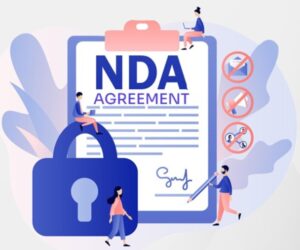Patent is the techno-legal document which grants the right holder exclusive intellectual property rights over specific inventions. It grants the inventor the exclusive right for a designated period of time, which is a non-extendable period of 20 years in India. To bring the best of monetary benefit from a patent, it is of utmost importance to mark the exclusivity of the invention – for which patent document needs to be aptly drafted.
Now the major challenge faced while applying for a Patent as a beginner is to figure out the right way to draft the patent application – which would not only ring out the best of the invention by navigating through the details, but also make it an easy go affair to get the patent granted. In this article we would take you through the crucial factors which should be borne into mind – before and while drafting the Patent – more specifically a Mechanical invention as a beginner.
Checks to follow before initiating patent drafting
Patent is all about protecting an invention, involving research and technology which is novel, inventive and has got industrial applicability. Hence, the foremost important step before proceeding or processing the drafting of a patent application, it is the novelty and inventiveness check which needs to be done. This will ascertain the fact whether the subject-matter is likely to proceed and get a patent grant or not. Thus, in a gist, the checks required are:
- Check for patentability criteria (novelty, inventiveness, industrial applicability) – this step might some extra effort in the beginning, but then, it can prove to be a great time (and money) saver later;
- If you are a foreign national filing a patent application in India, you need to grant Power of Attorney to an India resident to aid you in filing the patent;
- Check for relevant forms and fees requirement – which will help you to plan out the government charges required;
- Plan out whether the patent application would be filed only in India or even outside India – formal requirements change accordingly;
Segments of a patent specification and the details under each segment
Title: Title is nothing but a crisp heading of the invention which should broadly indicate the domain of the invention. Title of the invention should be not more that 15 words.
Preamble: Preamble of the invention differs for Provisional and Complete specification and is an indicative of the fact as to whether the application is a description of invention or even the manner in which it is performed.
Preamble for Provisional Specification: ‘The following specification describes the invention’
Preamble for Complete Specification: ‘The following specification particularly describes the invention and the manner in which it is to be performed’
Field of invention: This is indicative of the subject matter to which the invention relates and also the preferable area of usage of the application.
Background of the invention: If you had ever noticed, every story has a background which sets the plot and thereafter the entire story is based out of that plot. The background of invention in case of a patent specification is no exception – this portion highlights the present available technicalities (state of art) in the domain of the present invention for which the patent has to be drafted and thereby highlights the drawbacks of the state of art – thus indicating the problem statement. This problem statement is more like setting the plot on which the rest of the patent draft would be based upon.
In case of a Complete Specification drafting, the background is followed by Objective of the present invention (which can be a separate sub-category as well).
Summary of the invention: According to unwritten rules of the Patenting system, the summary of patent specification should be verbatim of the independent claims of the patent specification. In case it is a provisional specification, summary is more of a gist of the inventive concept of the invention – which in future can even be amended in the complete specification stage to make it a verbatim of the independent claims of the patent specification.
Brief description of drawings: This section mentions the drawings of the invention with a very brief (on-liner) indication of which drawing is indicative of what.
Detailed description of drawings: This is the section under which a complete picture of the invention is depicted. The main object of this segment is to enable a person skilled in the art to reduce the invention into practice without further experimentation. Again, according to unwritten rules of the Patenting system, this segment should consist verbatim of all the claims – suitably placed – along with the other details of the invention. This is the segment which should detail out on the enablement of the invention, the technical advantages, comparative details (if any), industrial applicability. Overall, this is the segment which should capture all the details of the invention to bring out the essence of the invention.
List of reference numerals: This is the segment which indicates what the numerals indicate in the drawings as mentioned (this segment is only required when drawing are provided along with the invention).
Claims: Claims are those which set the boundaries of the invention. Every claim consists of three parts – Preamble, Transitional phrase, and Body. Since the claims define the scope of the invention, it should be carefully drafted to cover all aspects of an invention and also at the same time bring out the novel aspect of invention in the independent claims and the inventive aspect in the dependent claims. Again, according to unwritten rules of the Patenting system, in India, two-part claims are most preferred ones wherein the claim should consist of non-novel parts followed by ‘characterised’ or ‘wherein’ and then novel component of the invention. It should be further kept in mind that the claims should not be too narrow – neither too broad. In case its too narrow, anything in future falling outside it and getting a patent is likely to happen. While on the other hand, if the claim is too broad, it would attract multiple prior arts and thus creating challenges to get the patent granted.
Abstract: Abstract is basically a concise summary of the matter contained in the specification. It should be indicating clearly the technical field to which the invention belongs, technical problem to which the invention relates and the solution to the problem through the invention and principal use or uses of the invention. Abstracts should always indicate the reference (the most appropriate) figure that best describes the invention (in cases whereby the patent application comprises of drawings).
Things to keep in mind when drafting a patent specification
Some of the frequently missed things which should be borne into mind while drafting a patent application:
- Go for a provisional specification drafting when the invention is yet to reach the end results, and complete specification if otherwise;
- Start with claims drafting in case of complete specification – that would help chalk out the boundaries of the invention;
- Always use the correct preamble for the provisional/complete specification to avoid objections in future;
- Patent office always prefers the preamble of the independent claim to be same as the title of the patent application;
- Add multiple embodiments so as to cover as many variants of the invention as possible;
- Abstract should always have the reference of the most appropriate drawing that best explains the invention;
- The specification should indicate only one invention/a single inventive concept;
- Reference numerals should be indicated in the detailed description, claims and abstract.
FAQs
Is there a word or page limitation in Indian Patent Drafting?
In the Indian Patenting system, for an application which goes beyond a total page count of 30 pages, there is an additional fees requirement.
Furter, for the abstract, it is preferable to keep the work count up-to 150 words and similarly, for the title of the invention, the word count should not go beyond 15 words.
Is there any language or font style or page-layout or margin details to be followed while drafting?
According to Rule 9, The Patents Rules 2003, these are the following criteria:
Language: Hindi or English (unless otherwise directed or allowed by the Controller)
Font style: As such text font is not specifically mentioned, but the most commonly used fonts in a patent document are Times New Roman, Arial or Courier. Nevertheless, it is mentioned that the text should be in large and legible characters not less than 0.28 centimetre high with deep indelible ink with lines widely spaced not less than one and half spaced only upon one side of the paper.
Page layout and margin: The patent document should be on such paper which is flexible, strong, white, smooth, non-shiny, and durable of size A4 of approximately 29.7 centimetre by 21 centimetre with a margin of at least 4 centimetres on the top and left-hand part, and 3 centimetres on the bottom and right-hand part thereof. The pages should be numbered in consecutive Arabic numerals in the centre of the bottom of the sheet. Further, it should contain the numbering to every fifth line of each page of the description and each page of the claims at right half of the left margin.
Are drawings mandatory?
Drawings aren’t a mandate, but preferred – specifically in mechanical or any relevant core domain patents. No descriptive matter shall appear on the drawings except in the flow diagrams. Drawings shall be on standard A4 size sheets with a clear margin of at least 4 cm on the top and left hand and 3 cm at the bottom and right hand of every sheet. Additionally, drawings shall be on a scale sufficiently large to show the inventions clearly and dimensions shall not be marked on the drawings.
Do you need to be a patent attorney to draft a patent?
A patent attorney isn’t a mandate when drafting or even filing a patent application and the same can be drafted and filed by the applicant of the patent as well. Only challenge lies in the fact that the applicant might not be aware of nitty gritty of the patent application, the legalities, forms, and fees involved. Hence, it is always advisable to seek the help of an expert – which is a patent attorney in the present case to process the patent application.
Can I club multiple inventions in a single patent draft?
Unity of invention is one of the crucial factors of a patent application, thus, clubbing multiple inventions in a single patent draft isn’t allowed. A complete specification shall always relate to a single invention, or to a group of inventions linked so as to form a single inventive concept (Section 10(5), the Patents Act, 1970).
How can you file a patent application post drafting of the same and till grant?
Post drafting of a patent application, it is the relevant forms and fees requirement which comes into play to process the application for filing.
Author: Priyanka Chakraborty
Copyright © 2023 Intellect Vidhya Solutions Law LLP. All rights reserved.






